
2010 Porsche 911Sport Classic Picture
The essence of what the Porsche 911 is about.
2010 Porsche 911Sport Classic Picture
The essence of what the Porsche 911 is about.Until Porsche went ahead with the Panamera, the idea of a five-door sportscar from the German carmaker seemed a pipe dream. Now the dream is reality.

We first encountered the huge new Panamera in 493bhp Turbo form and were suitably impressed. Now it's time to catch up with the normally aspirated 394bhp 4S model.
You could regard this as the 'sensible' Panamera, but it's still no slouch and could well appeal to the business types who want four seats and some semblance of practicality to go with the breathtaking performance.
This version uses a double clutch 'box to do the gearchanging for you, with the advantage that the 'PDK' automated manual uses less power than a traditional slushbox while offering stop/start in heavy traffic.
The 4S also has four-wheel-drive but how does the £80,000 Panamera go up against the glamorous Maserati Quattroporte, or its traditional rivals from BMW and Mercedes?
Understandably, many Porsche fans weren’t too keen on the idea of a four-door. And now that the Panamera is an inescapable reality, you either love it or hate. Luckily for Porsche, some of the voices that matter most are loving it. The latest voice is Bloomberg, which named the Panamera its first-ever Car of the Year.
Bloomberg columnist Jason H. Harper, who handled the testing for the awards, was gushing like a school girl about the Panamera: “The Porsche Panamera has broken the sports-sedan category wide open, producing a truly desirable auto that combines the best elements of a sports car and comfortable four-door.”
He was also quoted as saying: “Like a lot of people I wasn’t entirely sure what to expect of the Panamera, but sometime between having a six-foot eight-inch buddy in the back seat and hauling into deep corners around the track, it became clear. It’s still a Porsche — just a really versatile one.”

2010 Porsche Panamera Picture
The 10,000th 2010 Porsche Panamera has been sold already, after only three months on sale in Europe and two months in the U.S.
2011 Porsche Boxster Spyder Picture

2011 Porsche Boxster Spyder
At a glance, the 2011 Porsche Boxster Spyder is simply a special model that sheds 176 pounds of non-essentials in the name of purist performance. Nothing new in this plan, since Porsche has been building lightweight models for decades. It's an easy recipe — cut weight and sell the car at a premium to Porschephiles who can't resist the idea that less is really more.
Among the non-essentials stripped from this Boxster are the air-conditioning and radio — items which, let's face it, most owners will option back into the car. Check the boxes for these bits and the overall weight saving for the Spyder is diminished to about 134 pounds. Optioned accordingly, we're talking about a roadster that still weighs 2,852 pounds — a weight reduction that's useful, but one worth celebrating? We weren't so sure. Then we drove it.

And everything changed.
This 2011 Porsche Boxster Spyder is at once sharp and supple, responsive yet calm, smooth yet immensely powerful. It is, most certainly, a product of much, much more than simple weight reduction. And it's worthy of more than just a glance.
Hammer It
Our research (all this being in the cause of science, of course) began on Carmel Valley Road, one of the most demanding driving roads in the country and our favorite destination when we travel to Monterey, California. County Road G16, as it's known to locals, provides a host of chassis-torturing features: high-speed off-camber corners, cattle guards, frost heaves, patched sections, falling rocks and the occasional wet spot.
Porsche, however, was utterly unfazed by the challenge G16 represents. So we did what we had to do and caned the Spyder through the worst G16 has to offer. And yet we found little to criticize, whether chassis stiffness, damping control or ride quality. Sure, this Boxster roadster isn't as composed as a closed car, but we rarely found the bumpstops and were continually impressed with the Spyder's ability to put power down confidently and remain superbly composed.
And driving to this car's limits means going very, very quickly. There's a comfortable rhythm to be found at 9/10ths that leaves ample room for the unknown, yet yields a speed unmatched by any roadster we've ever driven.
Digging Deeper
After pulverizing Carmel Valley Road, we sat down with Maurice van de Weerd, the Boxster's senior chassis engineer, to talk shop about this most special Porsche.
Compared to a conventional Boxster, the biggest change to the Spyder's suspension is a 0.8-inch reduction in ride height. In combination with the deletion of the regular Boxster's electrically operated convertible top, the overall result is a 1-inch reduction in the Boxster's already low center of gravity. At the same time, the lower ride height requires the spring rates to be increased by 10 percent up front and 30 percent in the rear to keep the car from bottoming. The real secret, according to van de Weerd, is almost neurotic attention to the polyurethane "spring aid," a bump rubber that's used to fine-tune the overall spring rate in the last 2 inches of suspension travel.

The Spyder’s 10 additional horsepower, over the Boxster S, should make the it the quickest-ever Boxster, especially when equipped with the optional PDK dual-clutch automanual and computer-automated Launch Control. The 3.4-liter flat 6 cranks out 320 horsepower, and the top speed is said to be an autobahn-ready 166 m.p.h. — with the top down. The center of mass has been pushed down, the suspension has been lowered and stiffened and the top has been scaled back to ultralight thonglike specifications.
How much, how soon? The base price in the United States will be $61,200 with availability starting in February.
How’s it look? To my eyes, the Boxster line has always come off as too dainty. The Spyder assuages some of those criticisms with its low stance and more muscular bodywork behind the cockpit. But the familiar Boxster front end looks a little odd paired up with the more aggressive rear section.
Porsche Boxster Spyder.

2010 Porsche Panamera Picture
The 10,000th 2010 Porsche Panamera has been sold already, after only three months on sale in Europe and two months in the U.S.Porsche said the $93,800 Panamera 4S is "proving particularly popular," accounting for 44 percent of sales. The Panamera Turbo, with a price tag of $132,600, accounts for 36 percent of sales, while the $89,800 Panamera S accounts for 20 percent of sales.
In a statement, Porsche said that "sales of the Panamera have really taken off."
The milestone 10,000 Panamera is a 500-horsepower platinum silver metallic Turbo. It is bound for a customer in Singapore.

The Porsche Panamera – a car not exactly lacking in presence or the ability to split opinion. But if you were somehow under the impression it sat subtly under the radar, then worry no longer. FAB Design feels the same.
‘FAB Design has refined the new Porsche Panamera and turned the conservative, standard product into a dream car’, the company says. If this is a car of somebody’s dreams, they’ve definitely had too much cheese before bed.
The wheelarches are much beefier (helpful when housing 22in rims), the front grille a lot more gaping and the rear of the car nigh-on unrecognisable. There’s a stonking rear diffuser, which lies beneath a trio of exhausts with trapezoidal tips. A smattering of gloss black trim leads to back-end styling that’s oddly reminiscent of a basking shark. A sculptured rear wing doesn’t do anything to lessen its impact, but then that’s no doubt FAB’s idea…
Of more appeal are the dynamic and mechanical tweaks. The Panamera Turbo’s standard 4.8-litre engine is cranked up to 690bhp while some underbody tweaks drop the centre of gravity by 20mm. All the questionable bodywork mods are crafted from carbonfibre, too, so at least they shed some weight as well as style.
At £279,000 this ain't cheap, but it's too sexy to ignore. The motor in question is the Porsche 911 GT3 R. It's a race-only version of the new GT3 and weighs only 1,200kg.
The engine is a 4.0-litre version of the usual 3.8-litre 911 flat-six and has 480bhp and that's without a turbocharger.
There's a sequential manual gearbox and that massive rear wing. So if you're an ambitious amateur racing driver with deep pockets this is the motor for you.

The new lithium-ion battery will be available as a $1,700 option as of January 2010 for the 911 GT3, 911 GT3 RS, and Boxster Spyder and is delivered with the car.
The new battery was developed specifically for lower weight. It is the same length and width as the old battery but is 2.8 or 70 millimeters lower, Porsche notes. The fastening points are completely compatible with the old battery.

Additional enhancements include a faster charge due to reduced internal resistance, a greater number of charging and re-charging cycles and a lower self-discharging effect and a longer service life.
In a press release, Porsche notes its lithium-ion battery comprised wound film of carbon and iron phosphate with a ceramic film moisturized by the electrolyte that serves as a separating layer. This compares to other lithium-ion batteries that use a combination of manganese oxide, cobalt oxide or nickel, this lithium-iron-phosphate battery, as it is called, offers advantages when used as a starter battery.
It is robust and consistently guarantees the usual voltage of 12 V for the car’s on-board network. The lightweight battery is made up of four cells and integrated electronic controls.
This battery management system protects the battery from major discharges and guarantees a consistent charge level within the individual cells. Once battery voltage drops below a certain threshold, a warning signal reminds the driver to re-charge the battery either simply by driving the car or by means of a conventional battery charger.
The new lithium-ion battery will also be available for retrofitting from February 2010 on the three models mentioned from Porsche Tequipment.
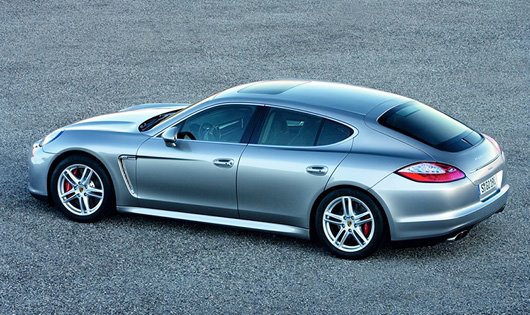
Autoblog has just-released official images of Porsche’s highly anticipated Panamera, the marque’s first four-door car (not counting the Cayenne SUV).
Described as a four-door grand touring (GT) sports car rather than a coupe or sedan, Porsche’s Panamera will feature Porsche’s newly developed PDK dual clutch transmission which makes shifting much more comfortable.
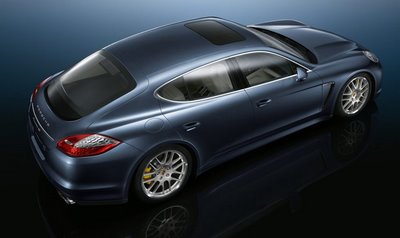
Production is slated to start next spring for a summer on-sale date, and the car is expected to be priced at around $175,000.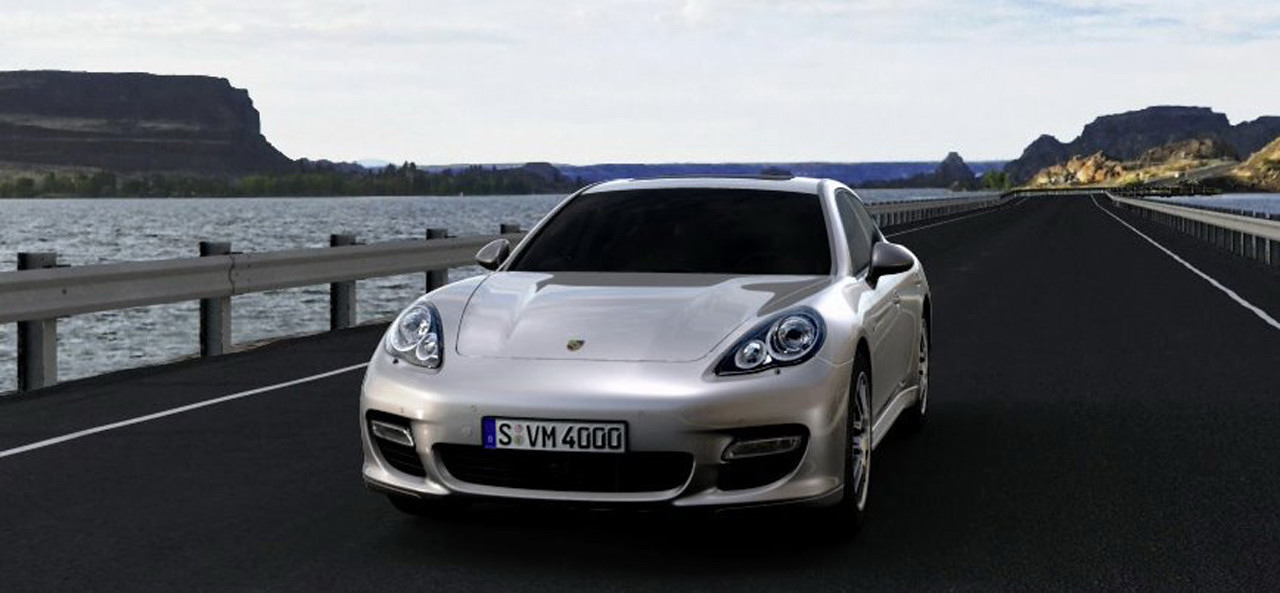

Power for the Panamera will come from a range of V6 and V8 engines that will likely mirror the Cayenne lineup. The engines will run from a paltry 300 horsepower up to the 500-hp unit from the Cayenne Turbo.
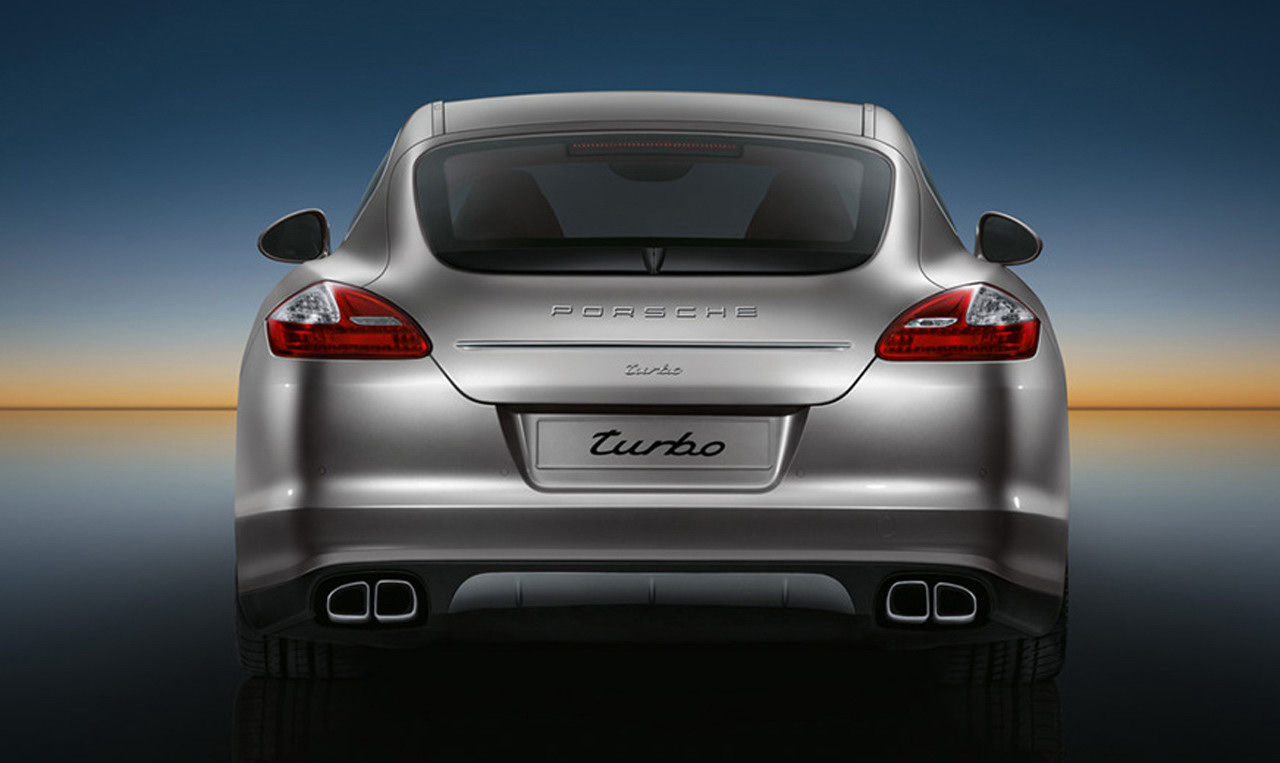
The Panamera will be available in several models with the Panamera Turbo at the top, the exact specifications have yet to be announced. At some point, probably sometime later in 2010-11, a hybrid variant will also debut.



Consider this a friendly admonition to Porsche purists. The story you are about to read is a review of the 2010 Panamera, Porsche's first foray into the Gran Turismo luxury four-door sedan market. OK, that was your warning.
When professor Ferdinand Porsche founded his namesake company in 1930, it wasn't until 1948 when the first true Porsche -- the aluminum-skinned, hand-built Porsche 356 -- was created in the family's saw mill-converted workshop in Gmünd, Austria. With history steeped in Formula 1 racing-inspired designs and other very clever engineering endeavors, demand for the unique sports car meant more than 78,000 "Type 356" cars were eventually built during the next 17 years.
Professor Porsche died in 1952, but his legacy lives on in every vehicle Dr. Ing. h.c. F. Porsche AG builds (the company name is often shortened to Porsche AG). And, for Porsche traditionalists, that's the rub. It all started in 2002, when Porsche AG introduced a midsize luxury SUV, named Cayenne, to its sports car-only lineup. Hoping to generate new interest for the marque, the Cayenne quickly revived the German manufacturer's reputation for building powerful, nimble, racing-based automobiles ... even if it was a sport utility. In all reality, the Porsche Panamera is what every Porsche has always been and that is a pure sports car, built from the ground up to accelerate, steer, handle and stop differently than any other production vehicle. The only difference is it has four doors and it's a sedan. But, the characteristic Porsche silhouette is there, from the front headlamps to the rear spoiler. According to Gaudin Jaguar Porsche Aston Martin General Manager Glenn Anderson, feedback from customers who attended an open house at the dealership and subsequent arrive-and-drive at Spring Mountain Motorsports Ranch in Pahrump this past week has been overwhelmingly positive. "Pictures just don't do it justice," Anderson said. "I think the big question for everyone was what the car was going to look like with four doors. People have seen it now and they like it." What's not to like? For potential Panamera buyers, however, it's all in the numbers. So, how's this for a luxury sedan? According to the German magazine Sportauto, Porsche test driver Walter Rohrl set a new sedan track record earlier this year at the famous Nurburgring (Nurburgring is a motorsport race track around the village of Nürburg, Germany). Driving the Panamera Turbo, he lowered the previous time (held by the Cadillac CTS-V) by 3 seconds. And, to prove this feat was no fluke, Gaudin invited about 80 guests to the dedicated road racing facility in Pahrump to put the Panamera to the test. "We wanted to show our customers the Panamera is not only an everyday driver, but also comfortable enough to put on the track," Anderson said. "After riding and driving it, opinions were definitely changed." Answering the question, "OK, but does it drive like a Porsche?" starts with outlining the Panamera's three models: the Panamera S, 4S and Turbo. Each features a 32-valve DOHC 4.8-liter V-8 engine, either naturally aspirated or twin turbocharged, capable of producing 400 to 500 horsepower, depending on the package selected. The engine also features Porsche's VarioCam Plus and Direct Fuel Injection for efficient combustion, which helps in the fuel economy column. Another new feature is the Auto Start Stop function, which gives the driver the option of turning the car off while at a stoplight. With the brake pedal engaged, the system can automatically turn off the engine. The engine will restart as soon as the brake pedal is released. Focusing on performance, Porsche engineers utilized cast aluminum pistons in the Panamera S and forged pistons in the Panamera Turbo, aluminum one-piece cylinder heads and an aluminum crankcase of closed-deck construction. A dry sump oiling system ensures longevity and that everything in the engine is well lubricated in all driving situations. Porsche's performance figures revealed the rear-wheel drive Panamera S accelerated from zero-60 mph in 5.2 seconds and had a top track speed of 175 mph. According to data collected by test drivers for www.insideline.com, however, the all-wheel drive Panamera 4S clocked in at 4.6 seconds. "It's a ripper," said Gaudin sales manager Paul Jarrett, referring to the turbo, all-wheel drive Panamera he was eyeing for our test drive. Sporting Porsche's "Yachting Blue Metallic" body paint, racing inspired 15.5-inch rotors with six-piston calipers (ceramic brakes are optional) inside 20-inch sports car wheels, heated and cooled front and rear seats, upgraded Burmester High-End Surround Sound System and the standard Porsche Communication Management system that features a high-resolution 7-inch touch-screen navigation module, Jarrett eased the Porsche off the showroom floor into the daylight. It looked even better. Inside, the Porsche Panamera is very comfortable and there's a lot to investigate, even from the passenger seat. The ascending center console is a command center where various suspension and exhaust modes can be selected, as well as access to whatever personal communication devices are needed. A wheelbase dimension of 114.9 inches ensures plenty of width and 195.6 inches in length isn't unreasonable considering you're driving a four-door. The Panamera Turbo weighs the most at a still-respectable 4,343 pounds which is achieved by using aluminum for the axles, hood, fenders, doors and rear lid. The cylinder heads are made of magnesium, which also reduces weight. Form does follow function in the Panamera. How else could Porsche have produced a four-seater? Jarrett started in the driver's seat, reviewing the Panamera's impressive instrument panel and other interior features, which included tan and black leather finishes everywhere. Once out on the road, he shifted into the Porsche Doppelkupplung (PDK) transmission's manual mode, but we never came close to using all seven gears. PDK is essentially two gearboxes in one and requires two clutches, which ensures ultrasmooth gear changes, Jarrett explained. But, you had to feel it for yourself. So, that's what we did. Your first decision is whether to use the two ergonomic buttons for changing gears or the PDK gear selector in the manual shift gate mode. Decisions, decisions. Going with the buttons on the three-spoke multifunction steering wheel seemed most comfortable and familiar, even though our manual shift upbringing used to require a clutch pedal. But, that's in the past and this is the present. This is a sporty driver with enough agility and performance to satisfy even the most dedicated Porsche enthusiast. The overall ride is governed by Porsche Active Suspension Management for electronic adjustment of the suspension system. The Turbo also features adaptive air suspension as standard, which can change the ride to the sport mode with the push of a button. There's also a stabilizing system that reduces lateral body movement called Porsche Dynamic Chassis Control. That we certainly felt, especially in cornering.
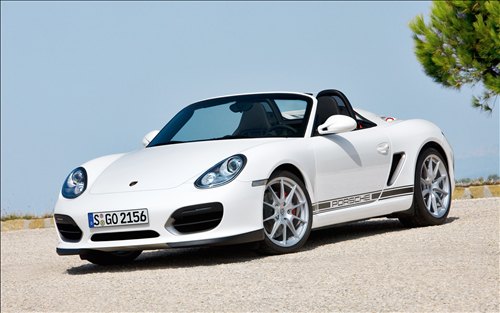

Conceived and designed as a four-door grand touring sports car, the Panamera combines numerous talents in typical Porsche style: sporting driving dynamics, a generous and versatile interior, and the supreme driving comfort of a Gran Turismo. Joining the 911, Boxster and Cayman sports cars and the four-wheel drive Cayenne, the Panamera is officially the fourth Porsche model series
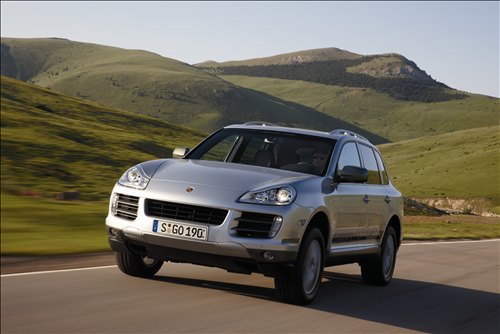
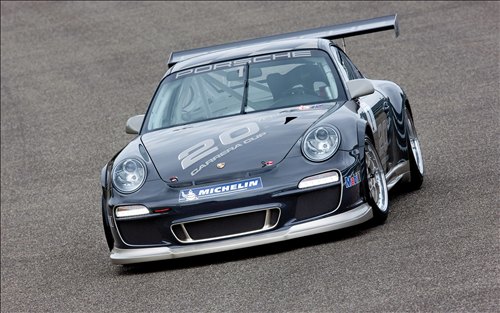
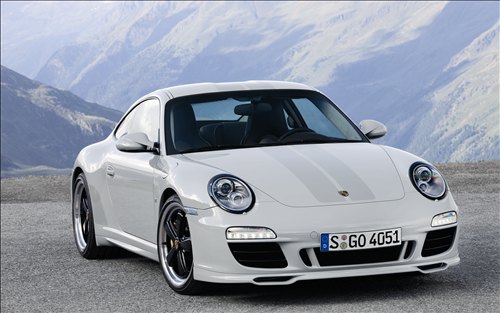
Along with the new 911 Turbo, GT3 RS and Cup Race Car, 
Customized by Porsche’s Specialist Department over the last 3 years, the 911 Sport Classic pays a tribute to the 1973 Carrera RS 2.7 with unique “ducktail” style spoiler.
Power from 3.8L 6-cylinder with Direct Fuel Injection has been increased by 23-hp for a total of 408-hp. It is mated to a 6-speed manual gearbox and also features Porsche Ceramic Composite Brakes, PASM sports suspension that lowers the entire car by 20 mm or 0.79? and custom-made 19-inch wheels. The interior comes with a wide-range of upgrades and is finished in Espresso Nature natural leather, providing a great contrast to the exterior Sport Classic Grey.

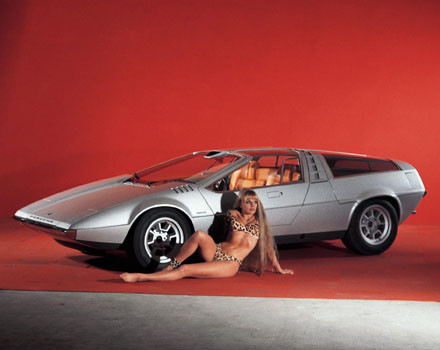
The Porsche Tapiro was designed in 1970 by Giorgetto Giugiaro of Ital Design. It was Giugiaro's 4th prototype at Ital and one of his favourite at the time. It was based on the Porsche 914/6 platform and featured a mid mounted 2.4 litre flat 6 cylinder Porsche engine, giving 220 bhp and 7200 rpm. There car had gullwing doors and the profile of the windscreen was almost the same angle as the bonnet. It's dimensions were 4060 mm long, 1760 mm wide and 1110 mm high.
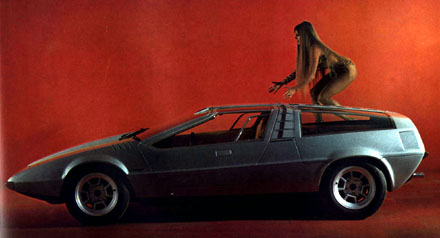
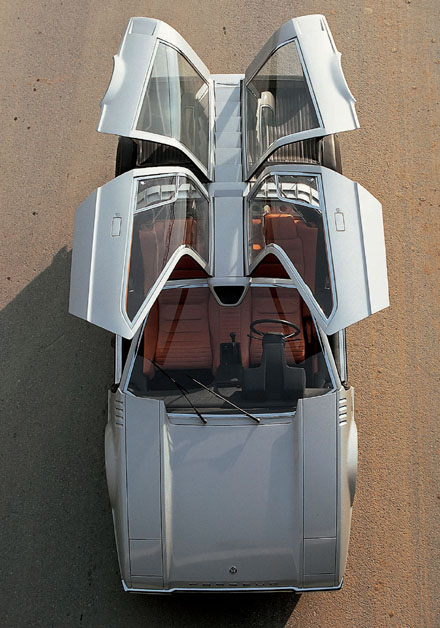
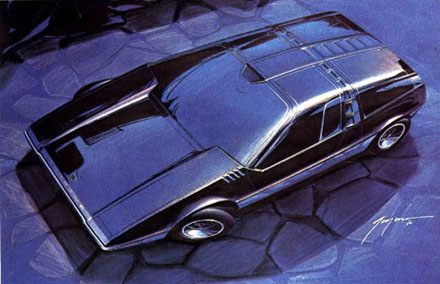
Porsche Tapiro Sketch
Porsche Tapiro exhibited in 1970
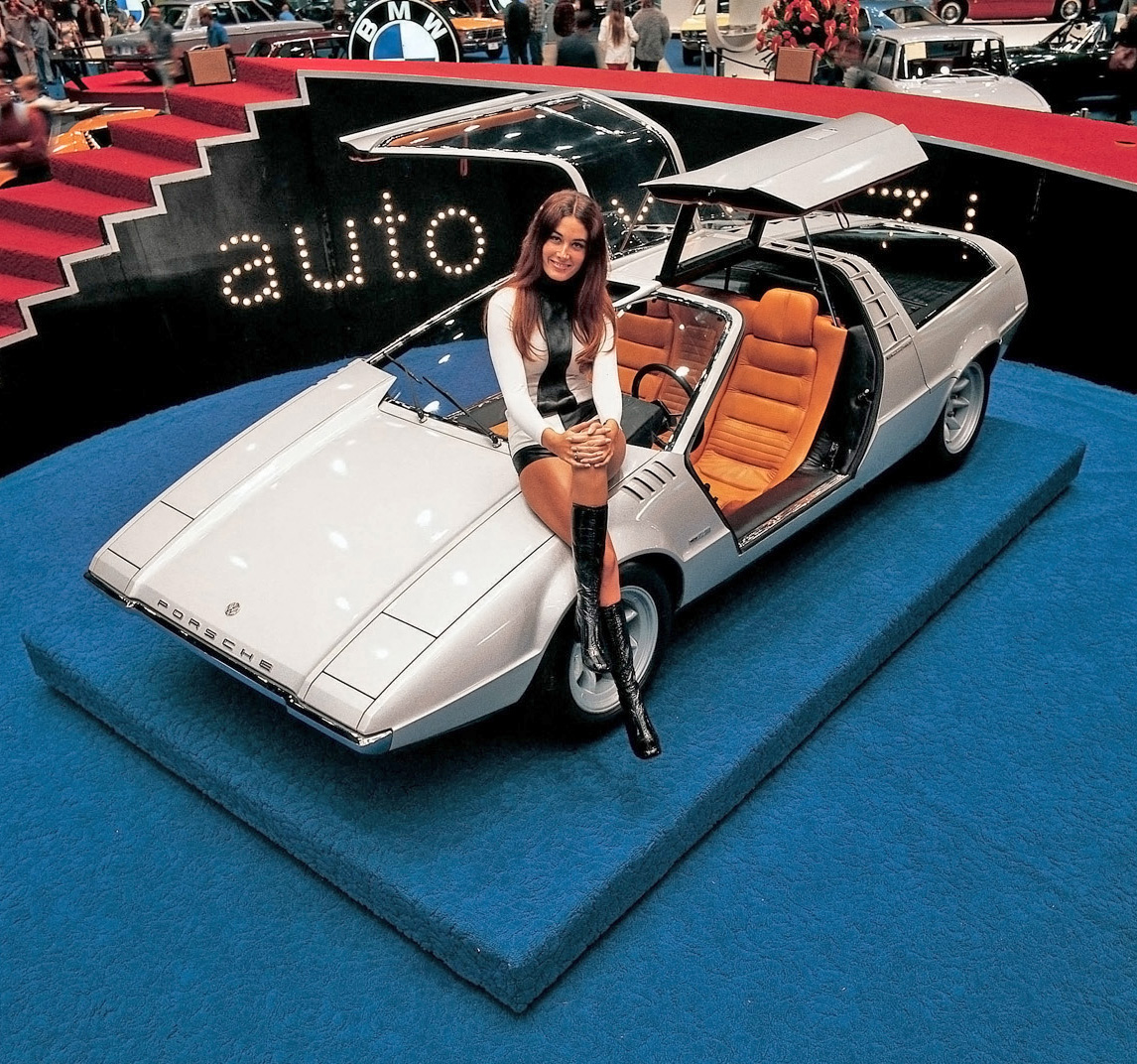
Tapiro exhibited in the early 1970s